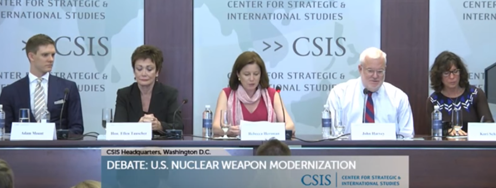A Primer on Nuclear Threats
Wonky. Scientific. Complex. Dense.
All of these words have been used to describe nuclear weapons policy. But now, thanks to a new report released by Ploughshares Fund grantee the American Security Project (ASP), engaging and accessible can be added to the list.
In ASP’s “Nuclear Security Index,” Dr. Janne Nolan and Eric Auner distill the highly technical world of nuclear weapons policy into unbiased, easy to understand graphics and facts.
The report’s key takeaways:
- The U.S. and its allies still face a wide range of nuclear threats.
- There are many different kinds of tools to address nuclear threats, including military strength, nuclear deterrence, international agreements and organizations, and technological investments like ballistic missile defense.
- A nuclear weapon cannot be compared to an ordinary bomb since the use of a single nuclear weapon would cause mass devastation and have profound effects on global stability.
- To date, only a small number of nations pose a near-term, urgent nuclear proliferation risk. Preventing such threats from escalating in the future will depend on careful leadership and cooperation from all like-minded states working together to enforce common norms.
This Nuclear Security Index comes at a critical time in U.S nuclear weapons policy. The U.S. is projected to spend $700 billion on nuclear weapons and related programs over the next ten years. As federal budgets tighten, it’s more important than ever for policymakers and the general public to understand the nuclear weapons programs that their tax dollars support. Only then can we have a realistic national conversation about what makes sense strategically – and fiscally – to ensure America’s national security.




